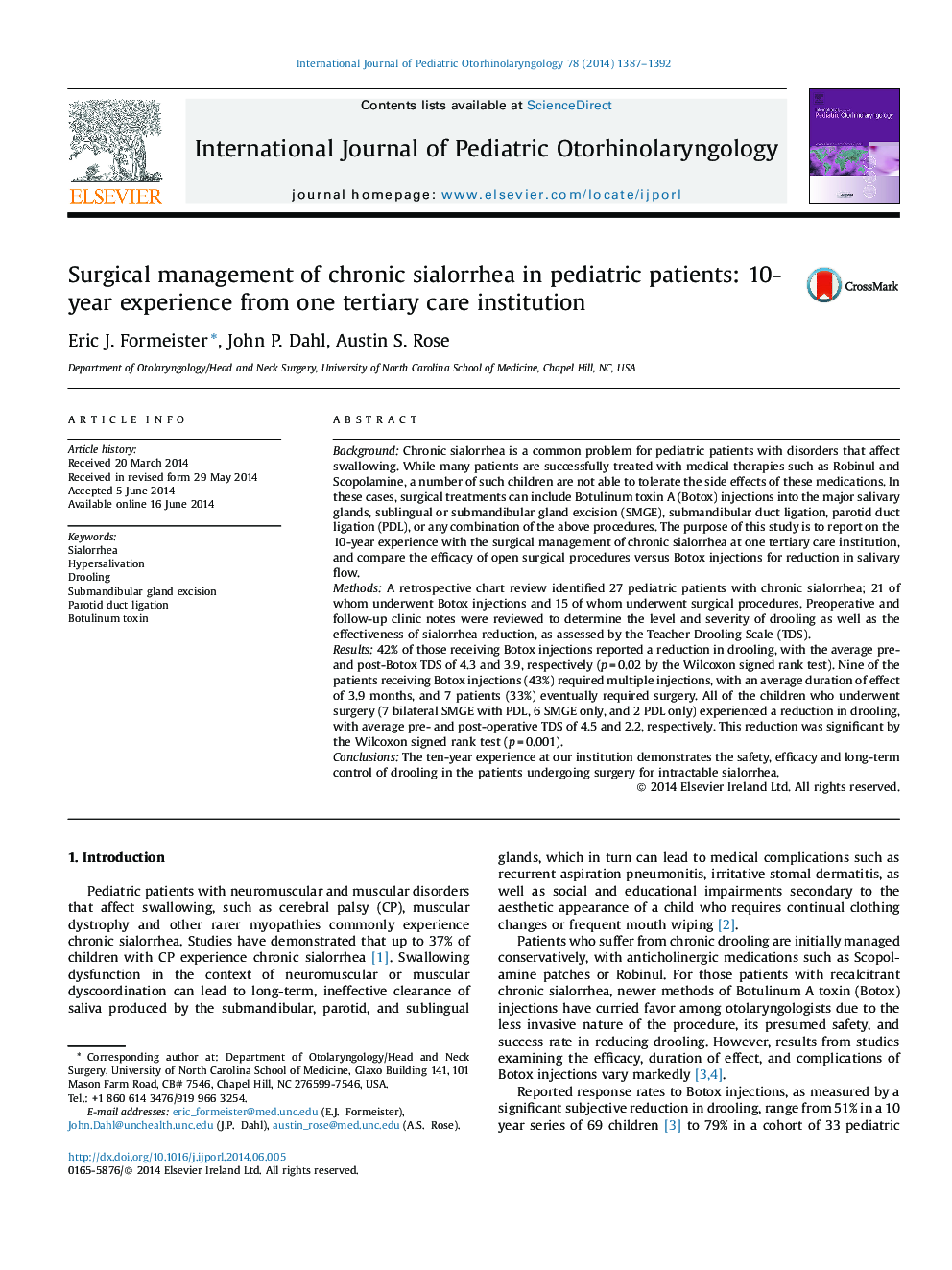| کد مقاله | کد نشریه | سال انتشار | مقاله انگلیسی | نسخه تمام متن |
|---|---|---|---|---|
| 4112460 | 1606005 | 2014 | 6 صفحه PDF | دانلود رایگان |
BackgroundChronic sialorrhea is a common problem for pediatric patients with disorders that affect swallowing. While many patients are successfully treated with medical therapies such as Robinul and Scopolamine, a number of such children are not able to tolerate the side effects of these medications. In these cases, surgical treatments can include Botulinum toxin A (Botox) injections into the major salivary glands, sublingual or submandibular gland excision (SMGE), submandibular duct ligation, parotid duct ligation (PDL), or any combination of the above procedures. The purpose of this study is to report on the 10-year experience with the surgical management of chronic sialorrhea at one tertiary care institution, and compare the efficacy of open surgical procedures versus Botox injections for reduction in salivary flow.MethodsA retrospective chart review identified 27 pediatric patients with chronic sialorrhea; 21 of whom underwent Botox injections and 15 of whom underwent surgical procedures. Preoperative and follow-up clinic notes were reviewed to determine the level and severity of drooling as well as the effectiveness of sialorrhea reduction, as assessed by the Teacher Drooling Scale (TDS).Results42% of those receiving Botox injections reported a reduction in drooling, with the average pre- and post-Botox TDS of 4.3 and 3.9, respectively (p = 0.02 by the Wilcoxon signed rank test). Nine of the patients receiving Botox injections (43%) required multiple injections, with an average duration of effect of 3.9 months, and 7 patients (33%) eventually required surgery. All of the children who underwent surgery (7 bilateral SMGE with PDL, 6 SMGE only, and 2 PDL only) experienced a reduction in drooling, with average pre- and post-operative TDS of 4.5 and 2.2, respectively. This reduction was significant by the Wilcoxon signed rank test (p = 0.001).ConclusionsThe ten-year experience at our institution demonstrates the safety, efficacy and long-term control of drooling in the patients undergoing surgery for intractable sialorrhea.
Journal: International Journal of Pediatric Otorhinolaryngology - Volume 78, Issue 8, August 2014, Pages 1387–1392
